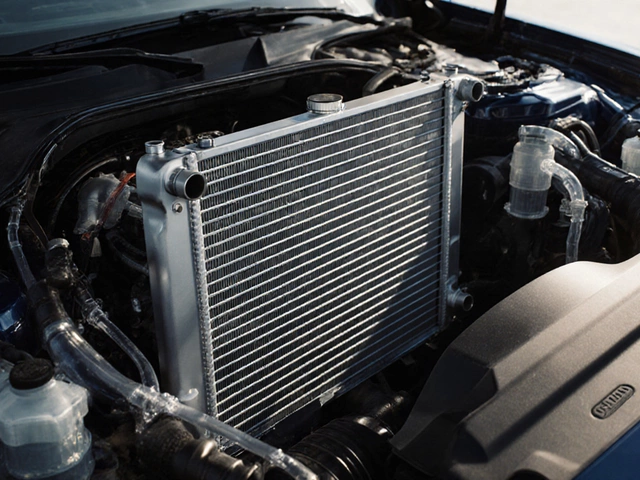
Ever notice your car running rough, using more gas than usual, or just not feeling right when you hit the accelerator? Don’t brush it off—old spark plugs could be the hidden culprit. Most people don’t think much about spark plugs. They’re out of sight, so they’re easy to forget. But let those little guys go too long and your wallet—and patience—will feel it.
Spark plugs set off the explosion that powers your car’s engine. Old or dirty plugs can’t spark right, so your engine stumbles, your fuel bill sneaks up, and sometimes your car won’t even start. I’ve seen it happen: one day, you’re cruising fine, the next, your check engine light blinks on and you’re stranded in a parking lot. Swapping out spark plugs at the right time keeps things running smooth, and catching problems early saves real money on costly repairs down the road.
- Why Spark Plugs Matter More Than You Think
- The Domino Effect: Problems Caused by Old Spark Plugs
- How to Spot Trouble Before It Gets Expensive
- How Long Can You Wait? Real-World Timelines
- Simple Ways to Stay Ahead of Spark Plug Trouble
Why Spark Plugs Matter More Than You Think
Most folks think spark plugs are just tiny posts under the hood, but they actually have a massive job. Every time you turn the key, your spark plugs create the spark that ignites the fuel-air mix inside each cylinder. No spark, no go. This simple action repeats thousands of times a minute when your engine’s running. Mess it up, and everything from how your car starts to how much gas it guzzles gets out of whack.
Here’s a fact that might surprise you: for every gallon of gas your engine burns, the spark plugs fire about 3 million times. They work hard, which is why they wear out.
- Bad or worn spark plugs make engines misfire, causing the car to jerk or hesitate, especially when you’re trying to accelerate.
- Your fuel efficiency drops. The U.S. Department of Energy says misfiring plugs can lower mileage by as much as 30%.
- Engine parts downstream, like the catalytic converter, can get damaged because unburned fuel can slip through and overheat them. That repair is way pricier than a fresh set of plugs.
| Problem | Potential Cost |
|---|---|
| Replace spark plugs | $60–$200 |
| Fix damaged catalytic converter | $900–$2,500 |
And hey, you never want to be that person blocking the school pickup line because your car won’t start. The bottom line: taking care of your spark plugs means your car runs smoother, lasts longer, and keeps those big repair bills away. Ignore them, and you’ll pay for it sooner instead of later.
The Domino Effect: Problems Caused by Old Spark Plugs
It’s wild how much grief a tiny spark plug can cause when it starts going bad. The damage doesn’t stop at just annoying engine hesitations or a weak start. It stacks up, with one issue causing the next, like falling dominoes.
When your spark plugs are worn out, the big immediate problem is ignition. Your engine can’t fire up the fuel mix properly, so you get misfires—shakes and stutters, especially when you’re idling. That means the engine isn’t running as smooth as it should, and sometimes, you’ll even feel the whole car jerk. This rough running makes your ride frustrating, but it also signals trouble ahead.
If those misfires keep happening, your engine’s computer can sometimes flood the cylinders with extra fuel to compensate. Since the spark plugs can’t keep up, that fuel doesn’t always burn. What happens next? Unburnt fuel sneaks into your exhaust, superheating the catalytic converter (a seriously pricey part to replace). It’s not rare for folks who delay changing spark plugs to end up with a bill for both new plugs and a cooked catalytic converter—an avoidable double whammy.
Old plugs also wreck your fuel economy. The U.S. Department of Energy says replacing a faulty plug can boost gas mileage by up to 4%. Doesn't sound like a lot? Crunch the numbers over a year and that’s real cash gone if you wait too long.
Worn spark plugs make your engine work harder, increasing the risk of:
- Failing the next emissions test (nobody likes that headache)
- Burning out ignition coils
- Excess engine wear over time
- Possible hard starts—especially when temperatures drop
Here’s a quick look at what can go wrong if you ignore worn spark plugs:
| Symptom | Potential Problem |
|---|---|
| Engine misfires | Unburnt fuel, rough idling, stalling |
| Poor fuel economy | More trips to the gas station, wasted money |
| Difficulty starting | Risk of being stranded, extra battery stress |
| Check engine light | Possible bigger engine or emissions errors |
| Catalytic converter damage | Costly repairs—$900+ for replacement |
So even if a worn spark plug seems like a small deal, ignore it and you’ll see how fast things compound. Fixing the root—timely changing of spark plugs—stops the dominoes from falling.

How to Spot Trouble Before It Gets Expensive
Too many people miss the early signs of bad spark plugs and pay for it later. You don't have to be a mechanic to see the red flags—just pay attention to how your car feels and sounds. The earlier you catch a problem, the cheaper the fix.
Watch for these common signs that your spark plugs are on their way out:
- Hard starts: If your car’s taking forever to start, or it takes two or three tries, your spark plugs might not be firing right.
- Rough idling: If your car vibrates or sounds like it’s chugging when stopped, worn plugs could be the issue.
- Engine misfires: Feel a jerk or stumble when you try to accelerate? That’s a classic sign, especially if it happens more in rain or damp weather.
- Poor fuel economy: Noticing more stops at the pump? Bad plugs make your engine work harder and burn more gas.
- Check engine light: If this is on—especially with any of the above symptoms—get it checked. Old plugs are a common reason for engine codes in cars made after 1996.
If you want numbers, here’s something wild: stats show that worn spark plugs can drop your mileage by up to 30%. That’s a lot of wasted gas.
| Problem | Potential Cost if Ignored |
|---|---|
| Delayed Spark Plug Change | +$100/year in extra fuel |
| Engine Misfire Damage | $400-$1,000 in repair bills |
| Failed Catalytic Converter | $900-$2,500 replacement |
If you hear weird clicking, popping, or you need to press down hard on the gas to get going, don’t wait—schedule a spark plug checkup. A quick inspection now can save you from major headaches and expensive repairs later.
How Long Can You Wait? Real-World Timelines
So how long can you really get away without swapping those spark plugs? Well, the answer isn’t the same for every car. Most modern cars—think anything built in the last ten or fifteen years—suggest changing spark plugs every 60,000 to 100,000 miles. Check your owner’s manual, though. Some older cars burn through plugs way faster, needing new ones after just 30,000 miles or so.
If you run on regular copper plugs, you’ll be doing replacements more often, since they wear out quicker. Platinum and iridium plugs last longer, but even they don’t last forever. Don’t trust “lifetime” claims—nothing in car maintenance is truly set-and-forget. Why wait until the car starts acting up when you can change them sooner and keep things smooth?
| Type of Spark Plug | Typical Lifespan |
|---|---|
| Copper | 20,000–30,000 miles |
| Platinum | 60,000 miles |
| Iridium | 80,000–100,000 miles |
Delaying beyond these ranges means you’re gambling with your engine and fuel efficiency. If you just use your car for short trips or lots of stop-and-go traffic (hi, school run parents like me), your plugs could wear quicker. Keep an eye on how your car’s running. If things start feeling rough before those milestones, don’t play the waiting game—swap them out.

Simple Ways to Stay Ahead of Spark Plug Trouble
You don’t need to be a mechanic to keep spark plugs working their best, but ignoring them can lead to engine headaches. The easiest way to dodge those problems is to know when to replace them and spot issues early. Check your car’s owner manual for the recommended interval—it’s usually every 30,000 to 100,000 miles, depending on your car and the type of plugs you use.
- Track your mileage: Write down when you last changed your spark plugs. A sticky note in your glove box or a reminder on your phone keeps you honest.
- Stick to the right plug: Not all spark plugs are the same. Use the type your manual suggests—copper, platinum, or iridium—to get the longest life and best performance.
- Pay attention to how your car feels: If your car is harder to start, idles rough, or your check engine light pops on, don’t ignore it. Those are classic signs it could be spark plug time.
- Get eyes on them: If you’re a DIY kind of person, you can remove and inspect spark plugs. Black soot, a worn tip, or oil on the plug means you’re overdue.
Did you know that worn spark plugs can lower your fuel economy by up to 30%? That’s a lot of money wasted on gas. Here’s a quick look at how often major car brands recommend changing spark plugs:
| Car Brand | Recommended Spark Plug Change Interval (Miles) |
|---|---|
| Ford | 60,000 - 100,000 |
| Toyota | 30,000 - 120,000 |
| Honda | 30,000 - 105,000 |
| Chevy | 60,000 - 100,000 |
Regular checks and simple reminders will keep your engine healthy, save you money, and help you skip those frustrating surprise repairs in the future.





